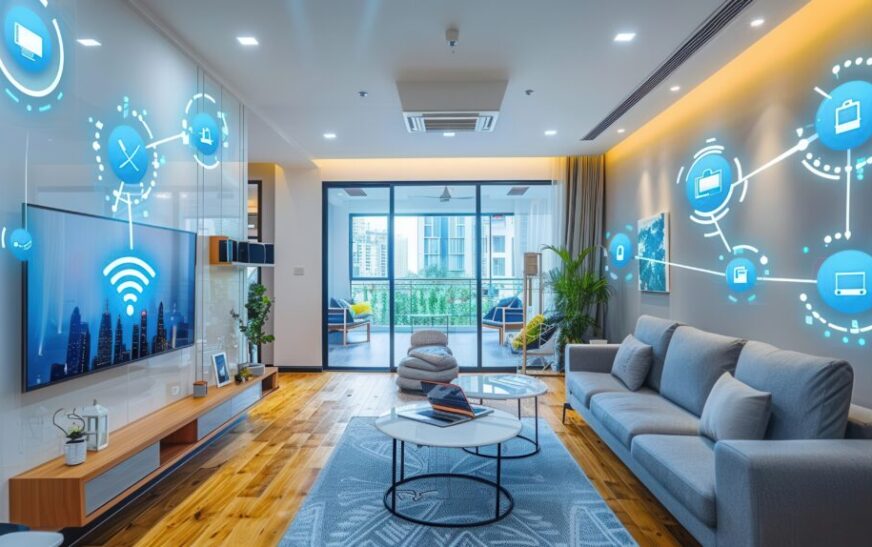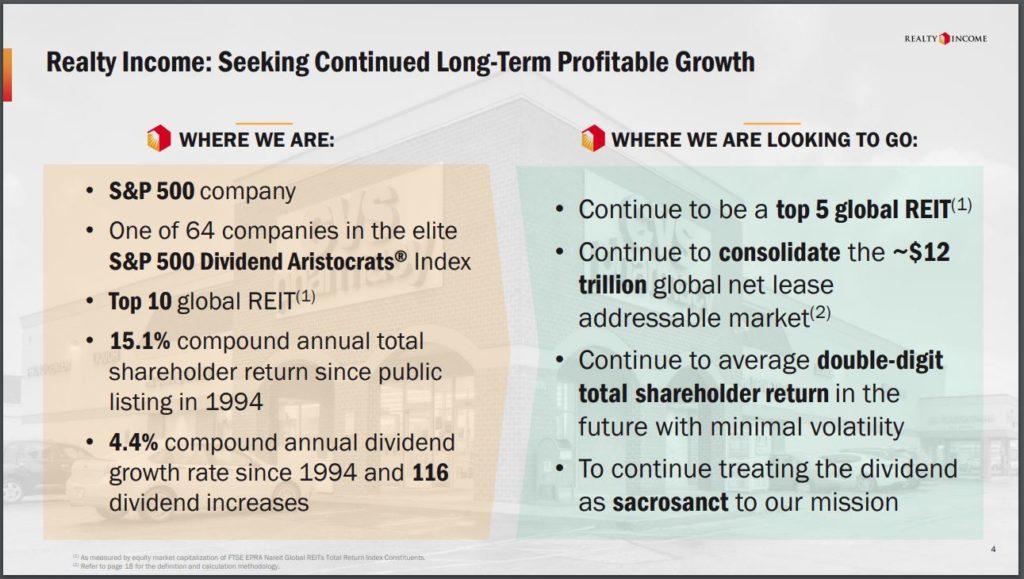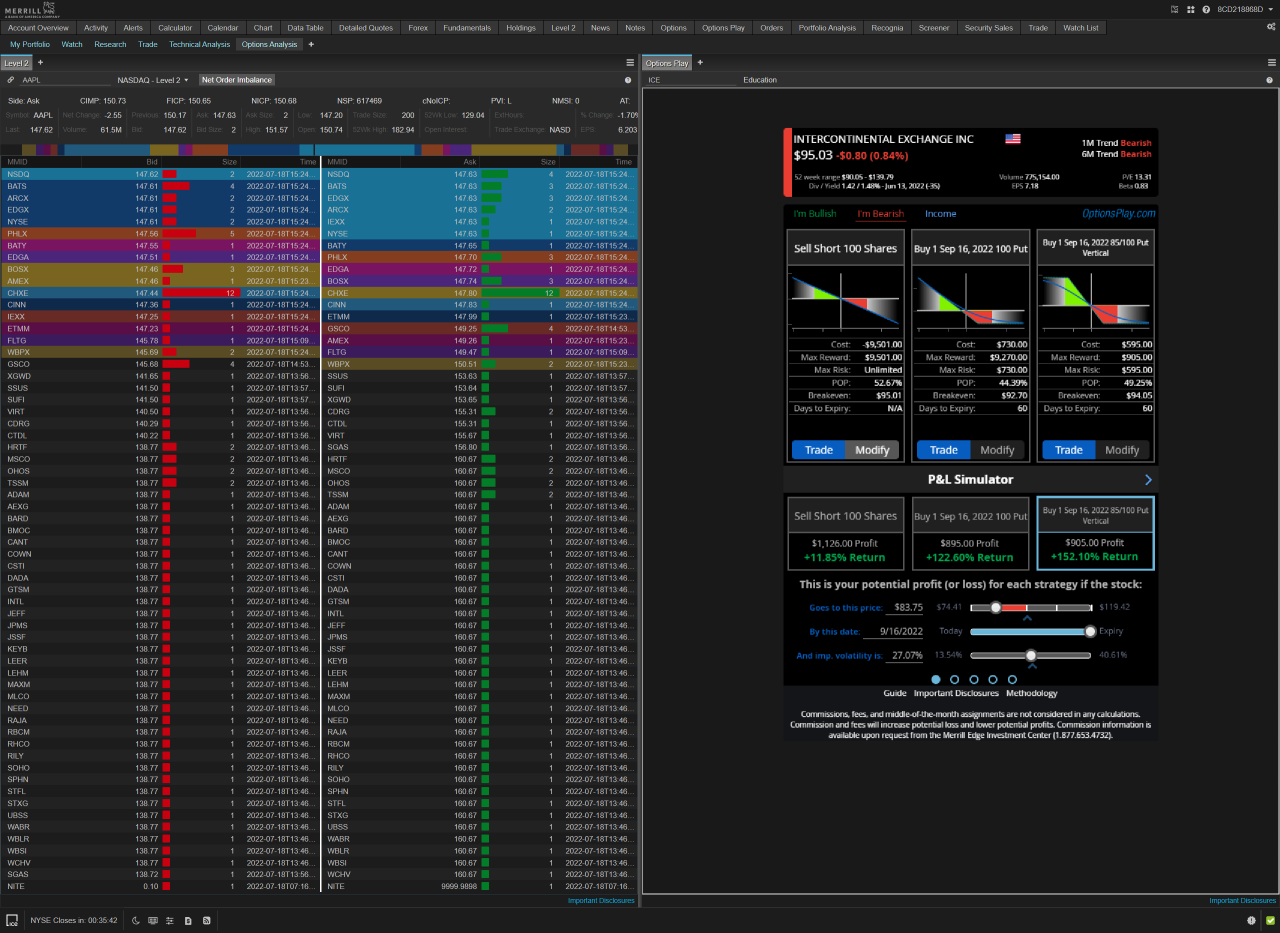Embark on a journey into the realm of smart interior design with security at its core. This guide offers insights and tips to create a safe and stylish living space that seamlessly integrates technology for enhanced security measures.
Explore the nuances of designing a smart interior that prioritizes security without compromising on aesthetics or functionality.
Understand the Basics of Smart Interior Design with Security
Smart interior design involves integrating technology and innovative solutions to create a functional and secure living or working space. This approach focuses on enhancing convenience, efficiency, and safety within the interior environment.
Key Security Features in Smart Interior Design
- Smart Locks: Utilizing digital locks that can be controlled remotely through a smartphone app or key fob, offering enhanced security compared to traditional locks.
- Surveillance Cameras: Installing smart cameras with motion detection and live streaming capabilities to monitor activities and enhance security surveillance.
- Smart Sensors: Integrating sensors for detecting smoke, carbon monoxide, or unauthorized entry, providing real-time alerts and notifications to prevent potential security threats.
- Smart Lighting: Implementing automated lighting systems that can be programmed to mimic occupancy patterns, deterring intruders and enhancing overall security.
Comparison with Traditional Interior Design
Traditional interior design primarily focuses on aesthetics and functionality without necessarily incorporating advanced security features. In contrast, smart interior design prioritizes security by leveraging technology to enhance protection and monitoring capabilities within the space.
Utilizing Smart Technology for Enhanced Security
Incorporating smart technology into interior design can greatly enhance the security of a living space. By integrating smart devices, homeowners can have more control and awareness over their home's security measures.
Examples of Smart Devices for Interior Security
- Smart cameras: These devices can provide real-time monitoring of the interior and exterior of a home, allowing homeowners to keep an eye on their property even when they are away.
- Smart locks: With keyless entry and remote access capabilities, smart locks can enhance the security of doors and provide homeowners with the ability to grant access to others when needed.
- Smart sensors: Motion sensors, window sensors, and door sensors can alert homeowners of any unusual activity in their home, helping to prevent break-ins or unauthorized access.
- Smart alarms: These devices can notify homeowners of potential security breaches, such as smoke or carbon monoxide detection, ensuring a safe living environment.
Benefits of Incorporating Smart Technology for Security
- Increased peace of mind: With remote access and real-time monitoring, homeowners can feel more secure knowing they have control over their home's security.
- Enhanced convenience: Smart devices offer convenient features like keyless entry, scheduling, and automation, making it easier to manage security measures within a living space.
- Improved response time: Smart technology can alert homeowners and authorities quickly in case of emergencies, reducing response times and potentially preventing incidents.
- Integration with other smart systems: Smart security devices can often be integrated with other smart home systems, allowing for a seamless and comprehensive security solution.
Designing Layouts and Spaces with Security in Mind
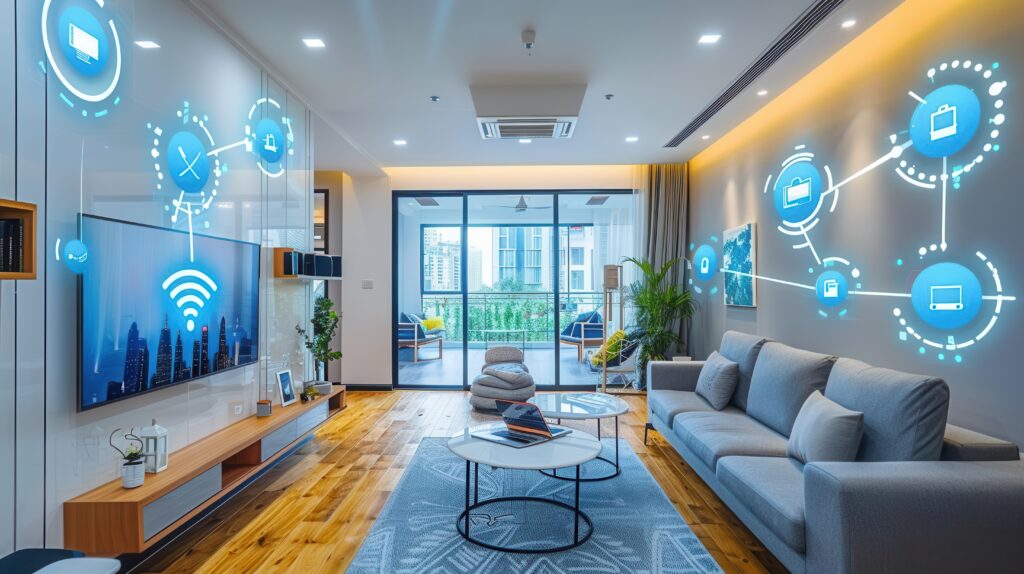
When it comes to designing a smart interior with security in mind, the layout and organization of the space play a crucial role in enhancing security measures. By strategically optimizing the layout and placement of security devices, you can create a more secure environment for your home or office.
Optimizing Room Layout for Maximum Security
- Ensure clear lines of sight: Avoid placing large furniture or obstacles that could block the view of entry points or security cameras.
- Strategic placement of entry points: Position doors and windows in a way that minimizes blind spots and provides maximum visibility.
- Secure key access points: Focus on securing key access points like doors and windows with smart locks or sensors for added security.
- Consider privacy vs. security: Find a balance between privacy and security by using smart curtains or blinds that can be controlled remotely.
Placement of Security Cameras and Sensors
- Strategically position cameras: Install security cameras at entry points, hallways, and blind spots to monitor any suspicious activity.
- Use motion sensors effectively: Place motion sensors in areas with high traffic or valuable items to detect any unauthorized movements.
- Integrate with smart devices: Connect security cameras and sensors to your smart home system for real-time monitoring and alerts on any security breaches.
Considerations for Designing a Secure Smart Interior
- Integration with smart security systems: Ensure that the layout allows for seamless integration of smart security devices for comprehensive protection.
- Accessibility for maintenance: Design the layout in a way that makes it easy to access and maintain security devices such as cameras and sensors.
- Scalability for future upgrades: Plan the layout with scalability in mind to accommodate future security upgrades or additions to the system.
Securing Entry Points and Access Control
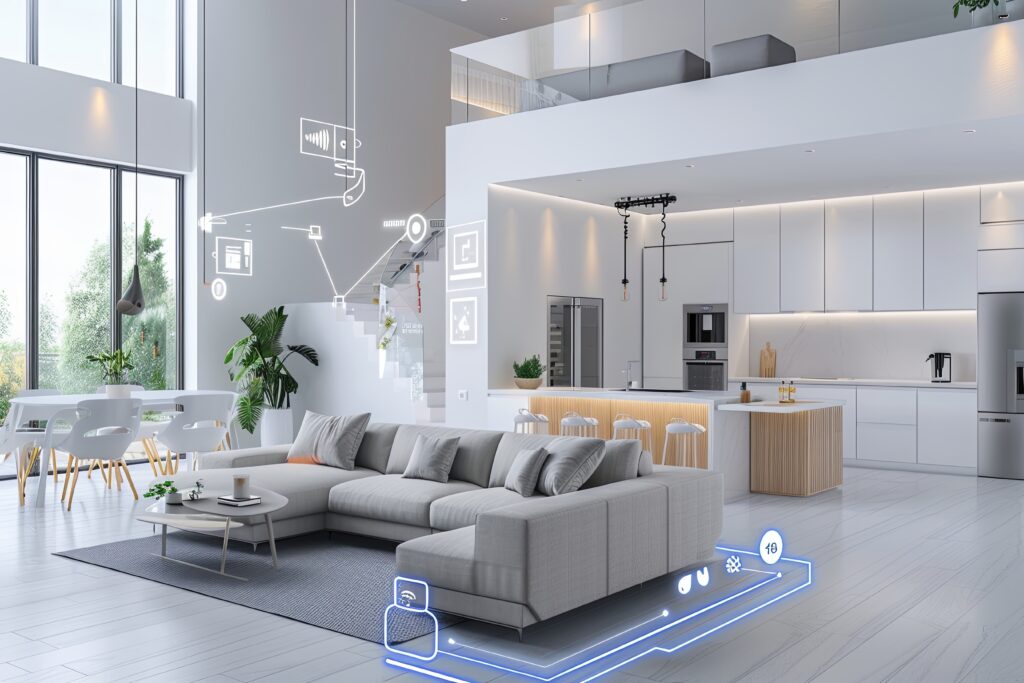
Securing entry points is crucial in maintaining the safety and security of a smart interior. By implementing access control systems and enhancing security measures at windows and doors, you can significantly reduce the risk of unauthorized access.
Implementing Access Control Systems like Smart Locks
- Install smart locks that can be controlled remotely via a smartphone app.
- Set up unique access codes for different individuals to track who enters and exits the premises.
- Integrate access control systems with other smart devices for a comprehensive security solution.
Enhancing Security at Windows and Doors through Design Elements
- Use reinforced doors and windows with impact-resistant glass to deter break-ins.
- Install motion-sensor lights around entry points to illuminate any suspicious activity.
- Incorporate window and door sensors that trigger alerts when opened or tampered with.
Lighting and Surveillance for Security
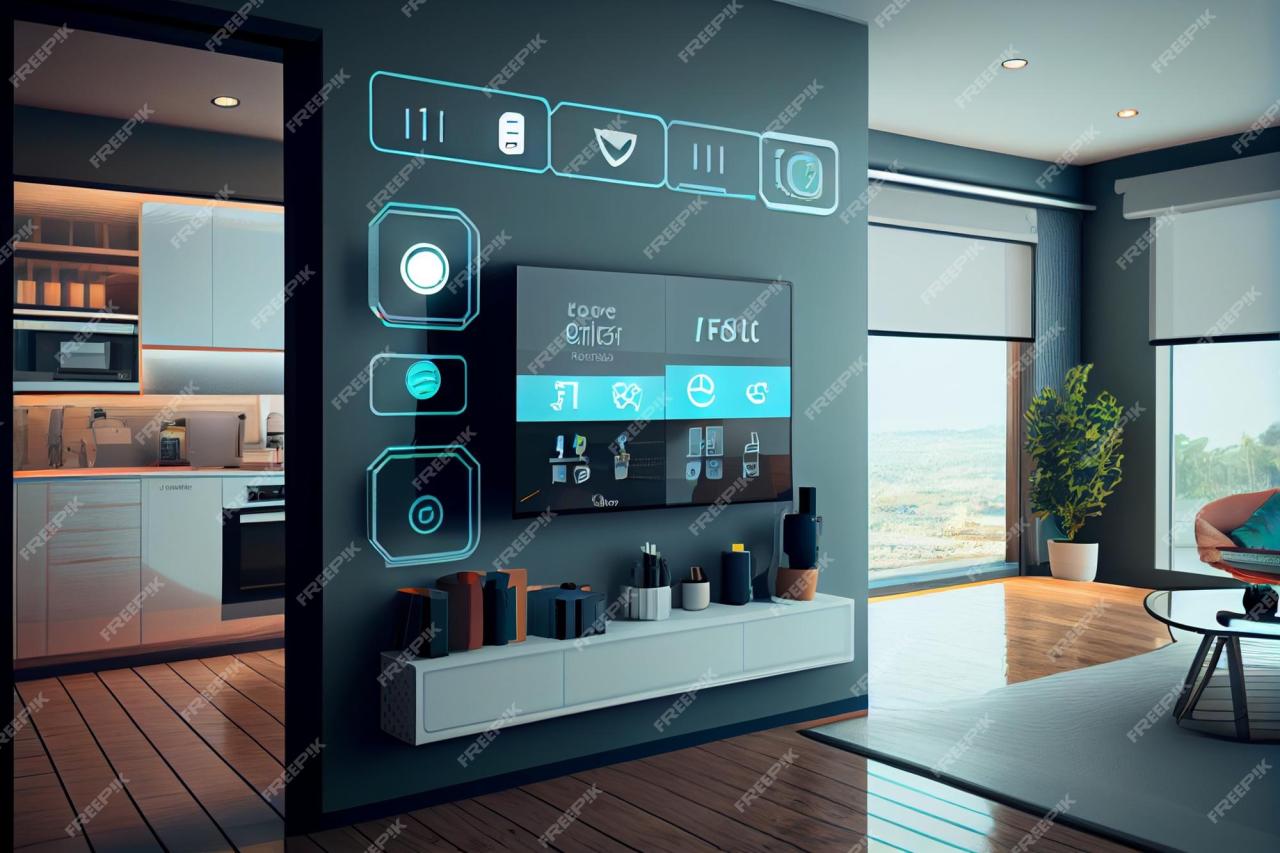
Lighting and surveillance play crucial roles in enhancing security within a smart interior. Properly designed lighting can deter intruders and create a sense of safety, while surveillance cameras provide real-time monitoring and evidence in case of incidents.
Integration of Lighting for Security
- Utilize motion-activated lights in key areas such as entry points, pathways, and blind spots to deter intruders.
- Install smart lighting systems that can be controlled remotely through smartphones or voice commands for added convenience and security.
- Use programmable lighting schedules to simulate occupancy when the house is empty, giving the impression that someone is home.
Integration of Surveillance Cameras
- Place cameras strategically at entry points, windows, and other vulnerable areas for comprehensive monitoring of the interior and exterior.
- Opt for high-definition cameras with night vision capabilities to ensure clear footage even in low-light conditions.
- Integrate surveillance cameras with smart home systems to receive real-time alerts and access live feeds from anywhere.
Examples of Seamless Lighting and Surveillance Setups
- Combine outdoor motion sensor lights with surveillance cameras to illuminate and capture any suspicious activity around the perimeter of the house.
- Install discreet cameras with built-in LED lights for indoor monitoring without compromising the aesthetic appeal of the interior.
- Integrate smart lighting with surveillance systems to trigger specific lights when motion is detected by cameras, enhancing visibility and security.
End of Discussion
In conclusion, designing a smart interior with security in mind is a blend of innovation and practicality. By following the guidelines Artikeld in this discussion, you can create a space that not only looks good but also keeps you safe and secure.
Helpful Answers
How can smart technology enhance security in interior design?
Smart technology can improve security by enabling features like remote monitoring, automated alerts, and integrated access control systems.
What are some key security features to consider in smart interior design?
Key security features include smart locks, surveillance cameras, motion sensors, and secure entry points.
Why is it important to optimize the layout of a room for security?
Optimizing layout helps maximize visibility, minimize blind spots, and create efficient security zones within the living space.

